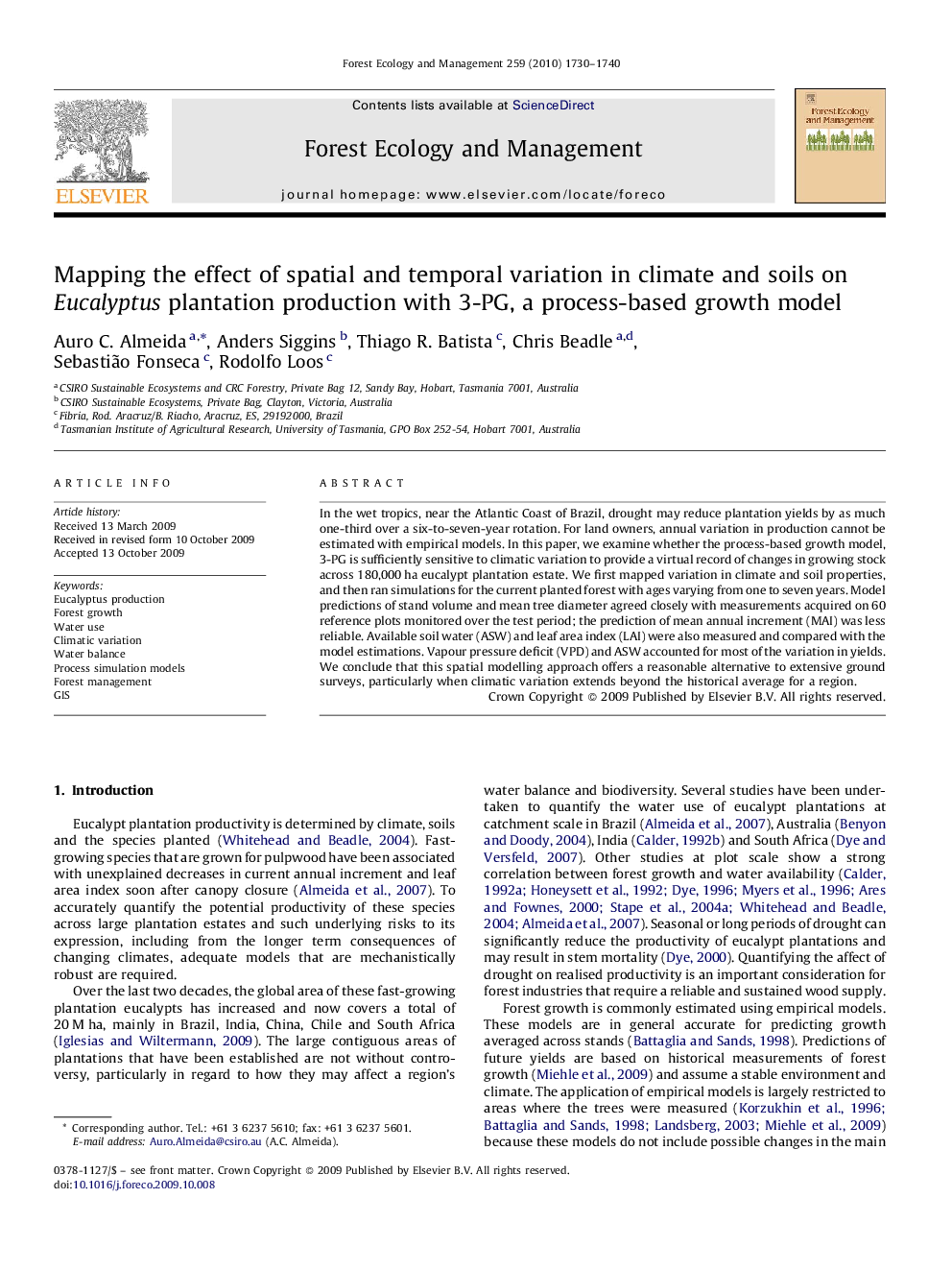| Article ID | Journal | Published Year | Pages | File Type |
|---|---|---|---|---|
| 88444 | Forest Ecology and Management | 2010 | 11 Pages |
In the wet tropics, near the Atlantic Coast of Brazil, drought may reduce plantation yields by as much one-third over a six-to-seven-year rotation. For land owners, annual variation in production cannot be estimated with empirical models. In this paper, we examine whether the process-based growth model, 3-PG is sufficiently sensitive to climatic variation to provide a virtual record of changes in growing stock across 180,000 ha eucalypt plantation estate. We first mapped variation in climate and soil properties, and then ran simulations for the current planted forest with ages varying from one to seven years. Model predictions of stand volume and mean tree diameter agreed closely with measurements acquired on 60 reference plots monitored over the test period; the prediction of mean annual increment (MAI) was less reliable. Available soil water (ASW) and leaf area index (LAI) were also measured and compared with the model estimations. Vapour pressure deficit (VPD) and ASW accounted for most of the variation in yields. We conclude that this spatial modelling approach offers a reasonable alternative to extensive ground surveys, particularly when climatic variation extends beyond the historical average for a region.
